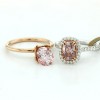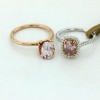Ralph Lauren’s New Upscale Look
Most of us don’t associate Ralph Lauren with high-end luxury items but know them more for polo shirts and the like. (Preppie casual, if you will.)
But Lauren decided to up the ante in his stores and his merchandise as you’ll see in this article in the Wall Street Journal.
Stores that used to be plush, clubby havens celebrating designer Ralph Lauren’s vision of stylish, casual American dressing are now transformed. Greeting shoppers as they cross the threshold at the designer’s New York City men’s store on Madison Avenue are $4,100 men’s watches with polished stainless-steel cases, crocodile bags and lace-up dress shoes starting at around $500. Polo Ralph Lauren RL +0.11% polo shirts have been relocated upstairs.
https://www.youtube.com/watch?v=q46f5QYYJB4
































